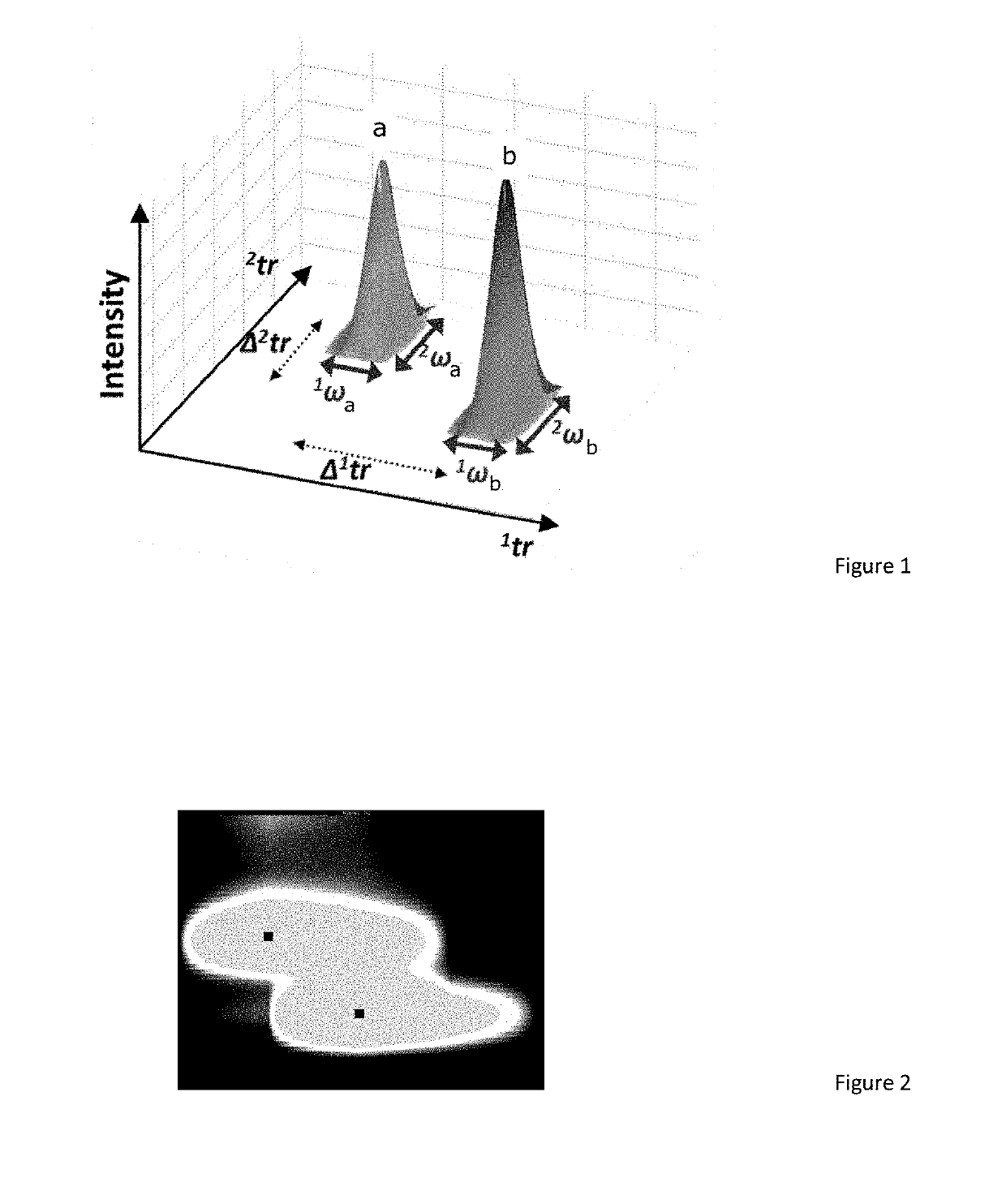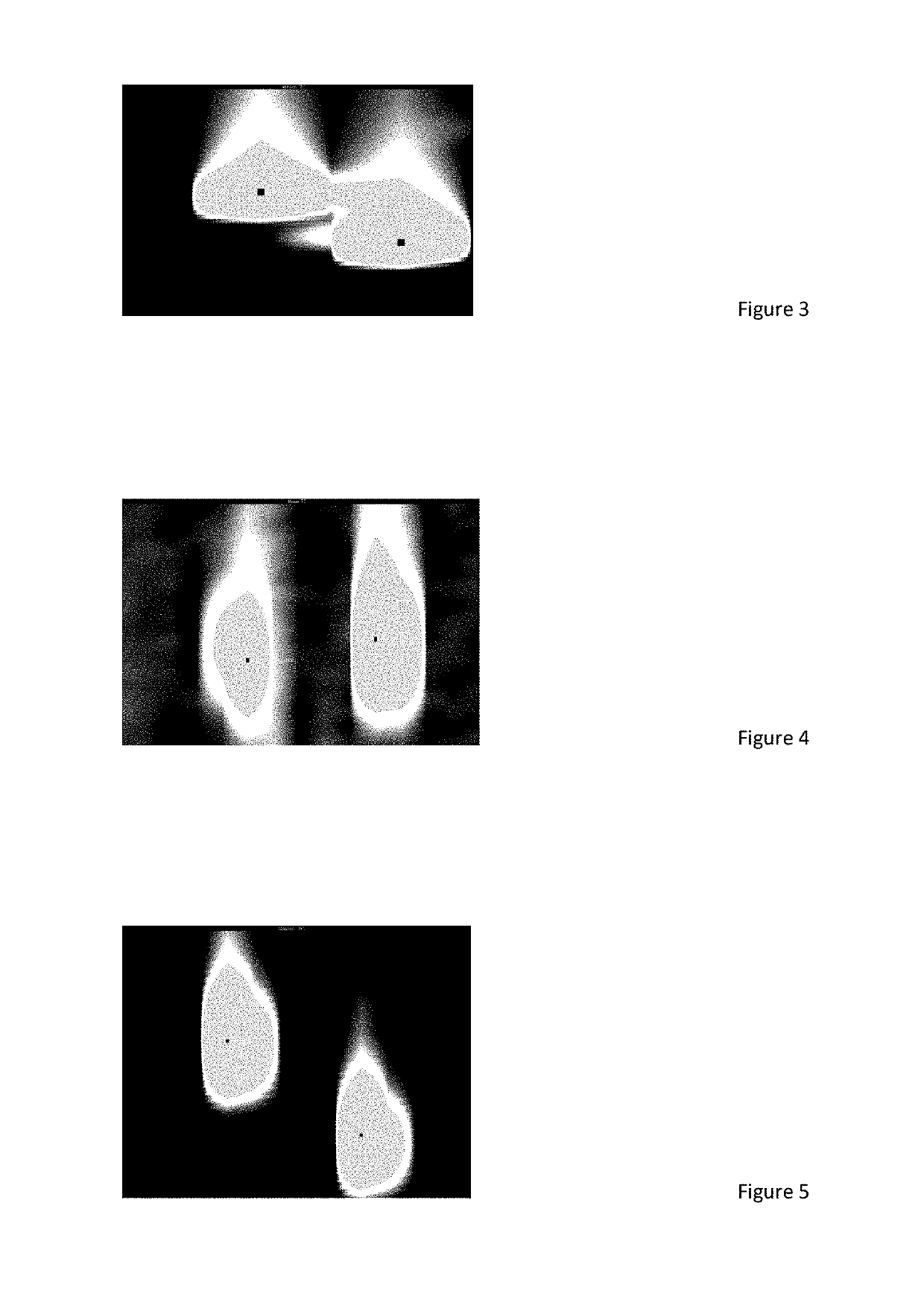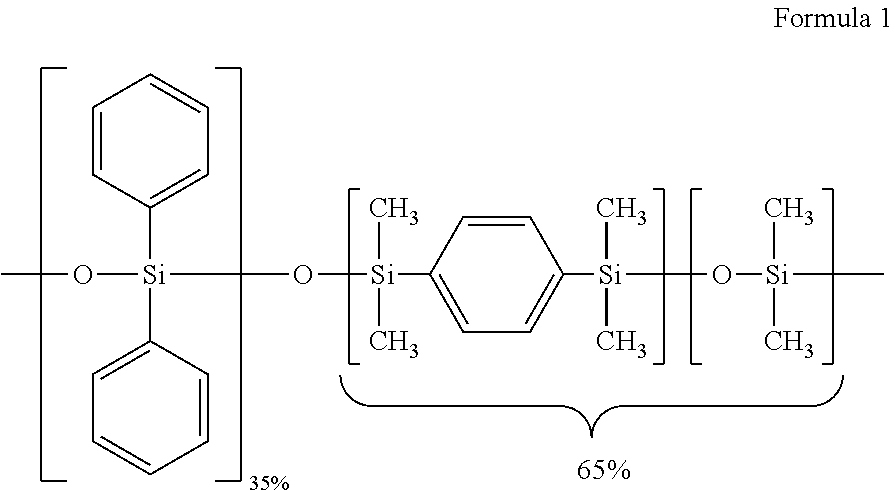Improvements in or Relating to Organic Compounds
- Summary
- Abstract
- Description
- Claims
- Application Information
AI Technical Summary
Benefits of technology
Problems solved by technology
Method used
Image
Examples
example 1
sional Gas Chromatographic Procedure
[0072]The 95 ingredients reported in Table 1 (see description herein above) were dissolved in METHYL TERT-BUTYL ETHER at a level of 250 ppm (0.0250% by weight) each. In cases an ingredient was a mixture of isomers, the amount was adapted in such a way that the most abundant isomer was at a level of 250 ppm in the solution.
[0073]All GC×GC experiments were carried out using with a Pegasus 4D GC×GC-TOFMS from LECO (St. Joseph, Mich., USA), consisting of a 7890B GC from (Agilent Technologies, USA), a LN2 cooled thermal modulator from LECO and a Pegasus HT TOFMS from LECO. The MS part was operated in an EI mode at −70 eV, with an acquisition frequency set at 150 Hz in a mass ranging from 35 to 350 g / mol and with a multiple-plate voltage set at −1450 V. The GC transfer line was set at 245° C. and consisted of the secondary column. ChromaTOF (LECO) was used for controlling the 2D-GC set-up, for data acquisition and for data processing. Injections of the ...
examples 2 to 6
efined Analytical Targets
[0075]The result of the two-dimensional gas chromatographic separation of the 95 allergens are reported in Tables 3 to 7 are the experimental data, including retention times in both first (1tr) and second (2tr) dimensions, width of the peak at half height in the second dimension (2width), and the resolution between neighboring peaks (Rs2D, from the first closest neighbouring peak to the fifth closest neighbouring peak).
Legend of Tables 3 to 7:
[0076]1tr=First Dimension Time (s)[0077]2tr=Second Dimension Time (s)[0078]2Width=Full Width at Half Height on secondary dimension[0079]Rs2D 1=Rs2D with the first neighbour[0080]Rs2D 2=Rs2D with the second neighbour[0081]Rs2D 3=Rs2D with the third neighbour[0082]Rs2D 4=Rs2D with the fourth neighbor[0083]Rs2D 5=Rs2D with the fifth neighbour[0084]TC SE2D=Total contribution to SE2D. This total contribution is the sum of the Rs2D for the corresponding target.
[0085]Table 8 shows an example of how the ingredients are clustere...
example 7
g of Ingredients
[0088]Pictorial representations of separation patterns of close defined analytical targets obtained with 2D GC set-ups in accordance with Examples 2 through 6 were prepared and are shown in FIGS. 2 through 5.
PUM
| Property | Measurement | Unit |
|---|---|---|
| Fraction | aaaaa | aaaaa |
| Fraction | aaaaa | aaaaa |
| Fraction | aaaaa | aaaaa |
Abstract
Description
Claims
Application Information
 Login to View More
Login to View More - R&D
- Intellectual Property
- Life Sciences
- Materials
- Tech Scout
- Unparalleled Data Quality
- Higher Quality Content
- 60% Fewer Hallucinations
Browse by: Latest US Patents, China's latest patents, Technical Efficacy Thesaurus, Application Domain, Technology Topic, Popular Technical Reports.
© 2025 PatSnap. All rights reserved.Legal|Privacy policy|Modern Slavery Act Transparency Statement|Sitemap|About US| Contact US: help@patsnap.com



